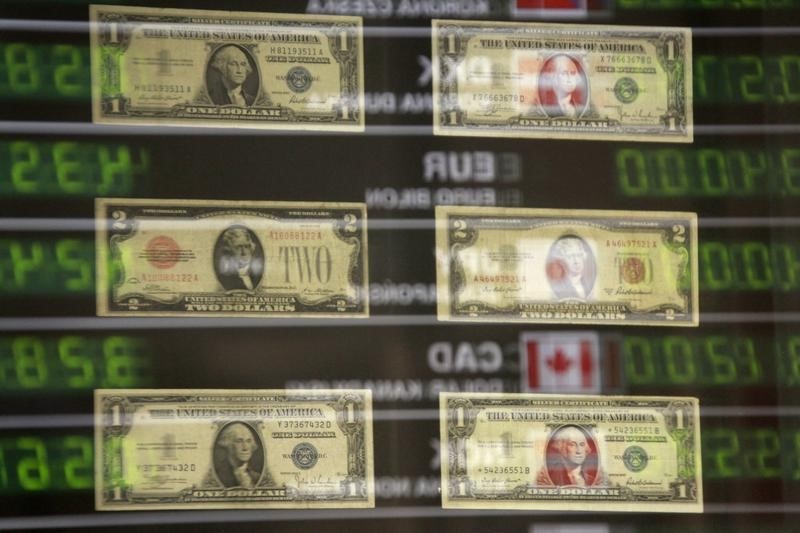* Cautious rise for European stocks helps dollar gain
* PBOC unveils new step to curb offshore yuan speculation
* Oil slides in wake of lifting of sanctions against Iran
* Canadian dollar recovers after slide to near 13-year trough (Updates prices, adds comments)
By Patrick Graham
LONDON, Jan 18 (Reuters) - A minimal recovery in stock markets helped the dollar gain some ground against Europe's current safe havens of choice, the euro and the Swiss franc, on Monday.
With trade thinned out by the absence of U.S. markets for a holiday, China's yuan gained around a third of a percent CNH=D3 on a Reuters report of new moves to add to funding costs for foreign players speculating against the currency. ID:nL3N1521DA
That sent the dollar/yuan rate back below 6.60 -- around 2.5 percent off highs for the greenback reached in the first week of January -- and eased some of the concern over Chinese markets that has dominated major currencies since the start of the year.
The Australian dollar also gained around half a percent while other commodity currencies stabilised despite another dip in the price of oil after Friday's 5 percent dive.
Predicted to fall at the start of 2016 on the increasing difference between U.S. and euro zone interest rates, the euro has instead see-sawed on the back of investors' appetite for risk, or lack thereof. Few expect this week's European Central Bank meeting to change that dynamic.
"With the ECB likely not close to additional easing, this week's meeting looks unlikely to stand in the way of safe-haven buying of the euro," said Josh O'Byrne, a currency strategist with Citi in London.
"After the ECB's message on easing in December investors see the bar a bit higher in the near term for the divergence trade. There is more volatility in other things."
The dollar gained around a third of a percent against the euro to $1.0886 EUR=EBS and more than 0.6 percent to 1.0064 francs CHF=EBS .
It also inched higher to 117.29 yen. JPY=EBS
Market participants remained sceptical about the prospects for a sustained improvement in risk appetite, however, given the selloff in global equities seen so far in January.
"I think we will continue to see demand for yen in the short term," said Jesper Bargmann, head of trading for Nordea Bank in Singapore. "I think the market is nervous and we will see further risk aversion."
Investors in Asia had taken aim at the Canadian dollar, driving it to a near 13-year low of C$1.4650 CAD=D4 against the U.S. dollar on expectations the Bank of Canada will cut interest rates as early as this week.
But some in Europe last week were already arguing that the extent of the falls in the Canadian dollar -- another 7 Canadian cents weaker against the dollar so far in January -- might stay policymakers' hand on further rate easing.
The dollar had recovered to gain 0.2 percent on the day against its U.S. counterpart in early European trade.
